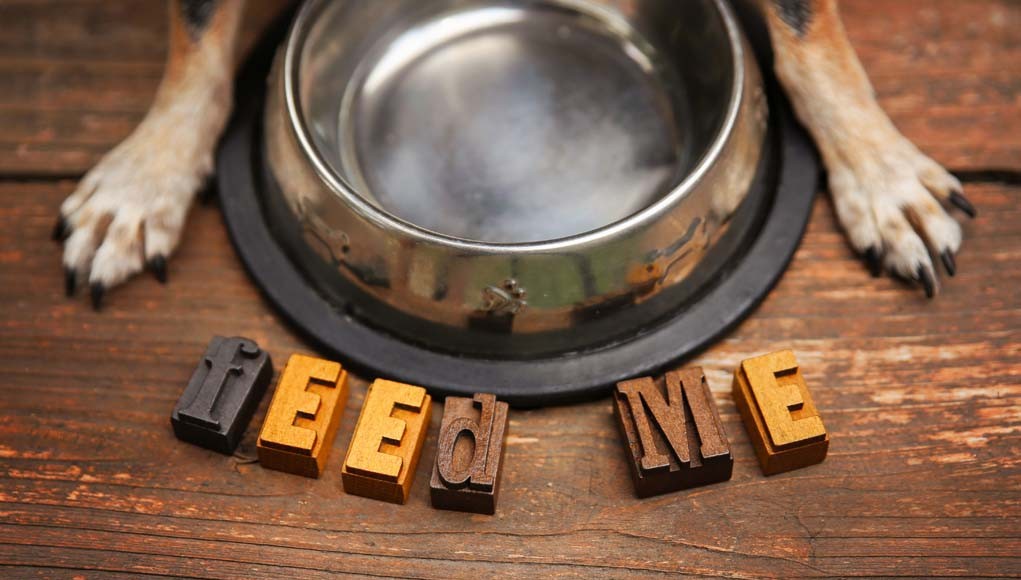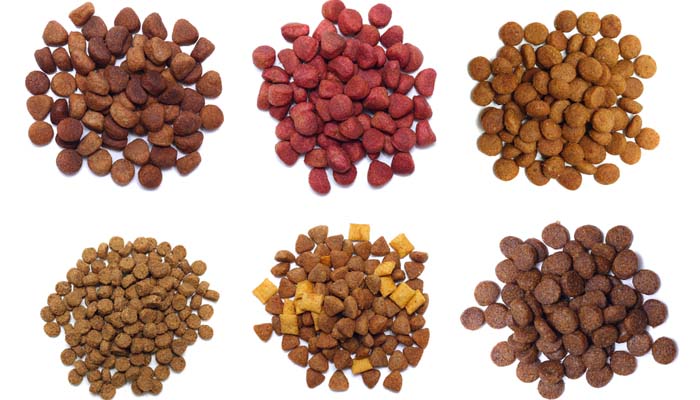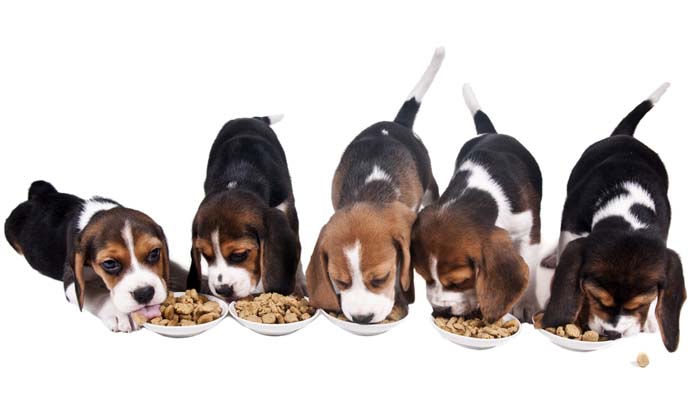Adopting a dog is one of the most exciting times in a pet parents' life. What will your new four-legged companion be like? How many amazing adventures will you have together? Although it is very exciting, it's also very nerve-wracking.
What supplies will you need to buy? What type of food should you feed him? What veterinarian will you take him to? Some of these decisions aren't very difficult, but understanding the different types of dog food and which you should choose is not a selection that you should make on a whim.
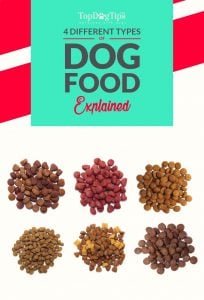 Ultimately, this choice will be up to you, and there are many factors to consider. What are your dog's nutritional needs? What type of diet is he already accustomed to? What is your dog food budget?
Ultimately, this choice will be up to you, and there are many factors to consider. What are your dog's nutritional needs? What type of diet is he already accustomed to? What is your dog food budget?
Even though the final decision rests with you, a conversation with your veterinarian is vital in deciding the type of dog food that is best for your pet. You don't have to stick with just one type either. For example, you could mix dry kibble and canned food or add a raw topper to your pet's commercial dry dog food.
Once you've taken all of this into consideration and agreed with your vet about the proper diet for you dog, it's time to start shopping for a brand. You'll need to find a brand that matches your budget, and you'll also need to find something that your dog enjoys eating, which isn't always as easy as it seems.
All in all, once you understand the different types of dog food and which will be best for your pet, you've gotten most of the hard work out of the way. When choosing a diet for your new pet or changing the diet of your existing dog, you need to take the time to research and learn about the different types of dog food available and the advantages and disadvantages of each diet.
But what's the best diet for dogs? We've done an extensive analysis of all commercial dog food diets and healthiest pick. Here are Top 15 Best Dog Food Brands.
4 Different Types of Dog Food and Which One Your Dog Needs?
In the United States, dog foods are usually sold as complete and balanced products for the age or breed specified by the manufacturer. According to a multitude of studies on commercial pet foods, dogs require 38 nutrients each day.
If the label on a package of dog food states that it is “complete and balanced,” it means that the food contains all of the known nutrients required by canines and that the nutrients are in correct balance with the energy density of the dog food and with the other nutrients in the food.
There are four main types of dog food available for pet parents to choose from. Those are:
- Kibble (dry dog food)
- Moist food (wet dog food, canned dog food)
- Semi-moist food
- Frozen and freeze-dried food
I'm going to give you some information on each of the different types of dog food, but it's up to you to do in-depth research on each diet and speak to your veterinarian before making your final choice.
READ ALSO: How to Pick Top 10 Dog Foods
1. Kibble (Dry Dog Food)
We all know one example of dry dog food – traditional commercial kibble. Dry dog food is a type of food with a very low moisture content. It can come in the form of kibble, but also includes flake foods and biscuits or mixers.Dry kibble is the most common dog food diet because it is the most economical option.
There are other benefits to dry dog food as well, no least of which the ease of storing dry kibble using a specific dog food storage container. The crunchiness of the food cleans your pet's teeth, which aids in dental hygiene. Dry dog food also doesn't expire as quickly as other types of canine food, and it doesn't need to be refrigerated.
Dry dog food contains a low moisture content, meaning that your dog will need a fresh supply of water available at all times as eating dry kibble will require him to drink more.
Dry kibble is easier to serve to your pet as well. There is no cooking, unthawing or preparation involved. All you have to do is scoop it into your dog's dish and serve it. It doesn't get any simpler than that.
This diet is not without it's disadvantages. Since a dry kibble diet is the most popular, there are also more options with this diet than any other. Unfortunately, many of the commercial dry dog foods on the market are not healthy for your pet.
You need to be very careful about the dry dog food that you select, as many are full of artificial colors, flavors and preservatives. Many also include unhealthy fillers and ingredients with absolutely no nutritional value.
RELATED: Top 5 Best Automatic Dog Food Dispenser
2. Moist Dog Food (Canned)
Moist dog food is quite the opposite of dry kibble. It has a very high moisture content, which gives it a completely different texture. Moist dog food is soggy and much easier for senior dogs or dogs with poor dental health to eat as it requires no chewing.
Moist dog food is typically cooked at a very high temperature in order to sterilize the food. It may come in cans, foil trays or pouches. The food may be in meatloaf form, chunks in jelly or chunks in gravy. You can buy refrigerated and frozen moist dog food too.
This type of dog food is more expensive, though usually has a fairly long shelf life. You need to be careful when buying moist food as well. You'll need to pay attention to the protein and water content.
The higher the water content, the less nutrients are going to be in the food. This means your dog will need to consumer more food to meet his daily nutritional requirement. Look for a food that is 100% nutritionally complete, and be sure to read the label completely before making your purchase.
RELATED: Top 5 Best Canned Dog Foods
3. Semi-moist Dog Food
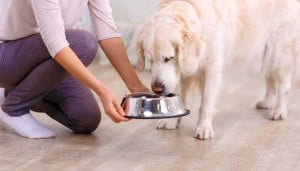 This is not a popular form of dog food, but it is a popular method type of dog treat.
This is not a popular form of dog food, but it is a popular method type of dog treat.
Most experts do not recommend this type of diet as it is the least nutritional of all the different types of dog food and usually contains many artificial flavors and colors.
Semi-moist dog food will typically look like soft pellets. It has a chewy texture and usually comes packaged in sachets. If you're thinking about feeding your pup a semi-moist diet, you need to seek the advice of your veterinarian first. It may not be a bad option for your dog's diet, but it's likely not the best choice.
READ ALSO: Expensive Dog Food Brands – Are They Worth the High Cost?
4. Frozen and Freeze-Dried Dog Food
Raw dog food will either come in a freeze-dried or frozen form. This has to be done for sanitary reasons. Raw food becomes susceptible to bacteria growth if not kept at cold temperatures.
These diets are very healthy, and many experts in the pet food industry are now recommending this type of diet, but it's also very expensive. Feeding your dog a frozen or freeze-dried food will cost at least twice (if not three or four times) as much as traditional dry kibble.
These foods do not last very long either. Usually you can leave frozen food in the refrigerator for 2-3 days, and you can mix a large batch of freeze-dried food with water and leave it in the refrigerator for 3-4 days. This means more prep time and a lot more work than most pet parents want.
Safe handling is a MUST when it comes to frozen and freeze-dried dog food. Here are some things you'll need to keep in mind if you're considering this option:
- After every meal your dog's bowl, any utensils that were used and all other dishes used to make the food need to be washed in hot soapy water and completely dried before being reused.
- You'll need to be vigilant about the state of the dog food packaging – making sure there are no holes or tears.
- You'll need to wash your hands thoroughly and sanitize any surfaces that the food touched after preparing your dog's meal.
- Leftover food needs to be stored EXACTLY as the manufacturer recommends. Usually it needs to be sealed and refrigerated on the bottom shelf of your refrigerator.
As you can see, there is a lot more work to feeding your dog a raw diet than most dog owners want. It is one of the healthiest options, so if you have the time and you can afford the dog food it's a very good choice to discuss with your veterinarian.
Holistic vets have a different take on dog foods. As Dr. Becker says the goal that every dog owner should have is to feed their pet the best food available that they can afford. If you're not feeding your pet an appropriate diet right now, that's okay.
It's never too late to change your dog's health by changing his diet.
Speak to your vet, do some research and think about your budget. Spending a little extra on a quality dog food will aid in your dog's overall health and well-being. You'll be saving money on veterinary bills, supplements and grooming expenses.
Understanding the different types of dog food and making the best choice for your dog will make your Fido happier and healthier.
READ NEXT: Dog Food for Dogs with Diabetes


